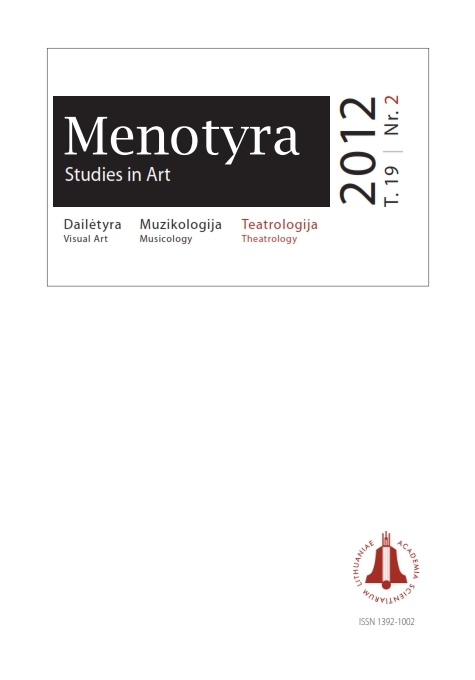Epinio, postdraminio ir žaidybinio teatro sankirtos
Rimo Tumino režisūroje
The crossings of epic theatre, post-dramatic theatre and the theatre of play in Rimas Tuminas’ work
Author(s): Ramunė BalevičiūtėSubject(s): Theatre, Dance, Performing Arts, Fine Arts / Performing Arts
Published by: Lietuvos mokslų akademijos leidykla
Keywords: epic theatre; epic treatment of drama; post-dramatic theatre; play; theatre of play; Tuminas; Širvys; Brecht
Summary/Abstract: The tendency of Rimas Tuminas’ directing to the epic form could be noticed already earlier, but it manifested itself most distinctly in the production “Here Shall Be No Death” (1988), which can be considered a manifesto of a new theatre and a new stage language. Like “Galileo” (1992) after Brecht, this performance concretized the relations of epic theatre, post-dramatic theatre and the theatre of play. The open and free form of the performances, the stress on the process rather than on the result, active involvement of the audience and an ambivalent reception - all these features are common to epic theatre and the theatre of play, and partly to post-dramatic theatre. Also, the performance “Here Shall Be No Death” presented an innovative principle of creation, when the fixed drama text is not necessary and the stress falls on the individuality of an actor rather on the fictional character. In “Galileo”, the director’s refusal to construct the stylistically uniform whole and “organically” connect details, as well as the creation of a meta-theatrical layer of the performance can also be attributed to the strategies of play.
Journal: Menotyra
- Issue Year: 19/2012
- Issue No: 2
- Page Range: 114-121
- Page Count: 8
- Language: Lithuanian

